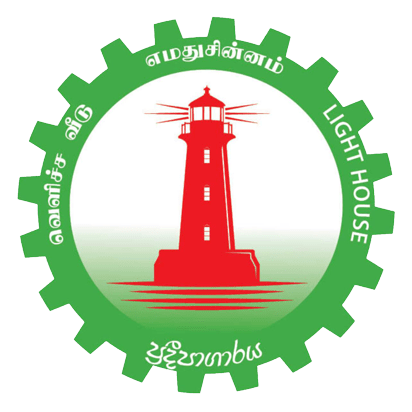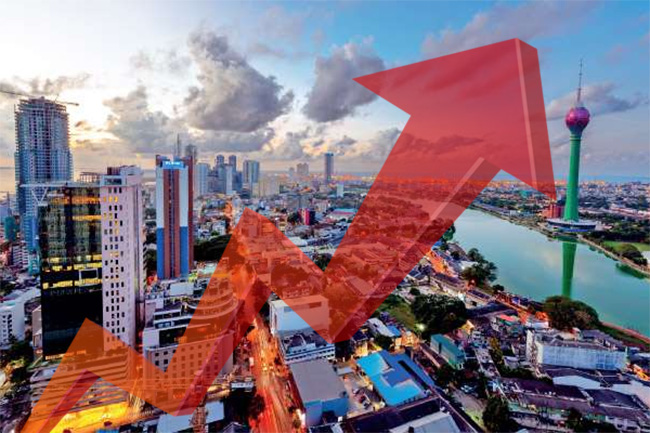Sri Lanka’s private credit is recovering from the latest currency crisis triggered by rate cuts to target output and high cost of living increase of 5 percent, and red flags are going up.
There are several red flags and one green one.
The biggest red flag is the single policy rate and state liquidity forecasts for private banks for which technical assistance has come from the International Monetary Fund.
As Sri Lanka is celebrating its independence, the macroeconomists are giving some limited freedom to buy cars. Gazette issued shows penalty taxes for holding stocks.
Meanwhile there are price controls for rice and heavy import duties. Exchange controls are also in place.
It is a sad plight for a country to be in 76 years after independence. And that is the second red flag.
From Scarce Reserves to Excess (or Ample) Reserve Framework
The single policy rate is the reddest of the red flags.
Under a corridor system, especially a wide corridor, the central bank only prints barely enough money for commercial banks which mis-manage their liquidity to clear transactions.
Without liquidity auctions, banks have to borrow at the top of the corridor at a rate slightly higher than the overnight market rate at times.
However when a mid-corridor rate is targeted, or a single rate is targeted, there is excess liquidity with banks bidding for easy money at low rates.
This was seen in October 2024 in particular.
For example, on September 03 the central bank offered 15 billion rupees through a liquidity auction, for which 36.28 billion rupees of bids came from banks. But since 15 billion was offered 15 billion was given at 8.51 percent, when the ceiling rate was 9.25 percent.
At 9.25 percent only 0.65 billion was borrowed. Though banks bid 36.58 billion rupees, the day’s transactions were cleared at 15.65 billion rupees, which is less than half the volume bid.
Banks will clear transactions by borrowing from clients or reducing credit if they were forced to do through a corridor system.
On September 05, 20 billion rupees was offered, 25.61 billion was bid. Since 15 billion rupees was offered, only 15 billion was given. There were no borrowings from the window.
If there was no liquidity offered, banks would soon learn to operate without central bank money. Foreign banks usually do that.
This is how scarce reserve frameworks work or borrowing small amounts from the ceiling window.
On September 09, 60 billion rupees was offered, 54.05 billion was bid and all bidders were given printed money. The lowest rate was 8.26 percent, which was one basis point about the lower policy corridor. The bidder obviously did not care whether they got any cash or not.
The big changes are because some money is also offered for a week or two through term auctions and some of them mature.
The lesser the variation in the daily rates, the higher the excess liquidity that is required. They have to be injected for days on end and weeks.
Ample or Excess Reserve Framework
Modern central banks in the age of inflation and volatile commodity and food prices give liquidity at the drop of a hat, like this.
If there is a ceiling rate it is reduced.
Up to the last quarter of 2024 the central bank was steadily selling down its Treasury bills portfolio, that is was a deflationary framework where there liquidity was constantly withdrawn and dollars were bought.
Now the central bank has run out of Treasury bills to sell.
When liquidity is injected, reserve money is inflated.
The current madness with excess liquidity had its roots in the end of the Great Moderation where in the US a narrower 25 basis point rate was targeted.
And then the policy rate was brought to almost zero, mis-understanding a productivity driven price index fall as a deflationary collapse (debt deflation).
After firing a Housing Bubble, in the style of John Law’s Mississippi Bubble, through what was then called the ‘mother of all liquidity bubbles’ the problem worsened.
After the collapse of the housing bubble, due to quantity easing large volumes of excess liquidity was generated in a great grandmother of liquidity bubbles.
Banks – which had a lot of bad loans and were also hit by the Frank Dodd Law – were initially not using the liquidity and were re-depositing them in the Fed. The Fed started to pay interest on them as well.
As the presence of excess liquidity got normalized, the Fed then said there was no reserve requirement at all.
And then suddenly it was an ‘ample reserve’ framework. No liquidity was ‘excess’.
READ MORE Implementing Monetary Policy in an “Ample-Reserves” Regime: The Basics (Note 1 of 3)
It is in this context that Sri Lanka is going into a single policy rate, regular liquidity auctions and targeting call money rates very narrowly.
This is deadly for a country which is trying to collect foreign reserves.
Reserve collection requires deflationary policy – gentle deflationary policy will keep the exchange rate stable through a scarce reserves regime.
Mis-pricing Risks, Destroying Market Discipline
The single policy rate and narrowly targeting the call money rate has other implications.
The call money rate is a clean rate which is supposed to be risky. However, it is happening among some prime banks with some limits to each other.
At the moment the un-backed call rate is below the treasury bill backed, repo market.
This is not normal.
(This column is based on one that was originally published in the Echelon Magazine of February 2025, but the trend is basically the same, except that the ‘signalled’ single policy rate turned out to be higher than rates further along the yield curve by late March. This phenomenon however will prevent an external default rather than create one.)
However, we can argue like this. The foreign banks are safer than government securities which are from a defaulted government.
Whatever it is, when the central bank gives liquidity, for days on end and weeks on end, banks that cannot borrow in the market, can escape the market discipline and trade with printed money, for days and weeks on end.
Eventually this money will turn into credit and imports, leading to loss of reserves, especially in the context of debt repayments.
One of the reasons banks in central bank regimes collapse and those is currency boards and dollarized areas do not collapse is due to the lack of these easy money.
Banks then become tightly managed.
When the US collapses due to the policy rate and open market operations, Hong Kong, which is a currency board, does not see banks collapses. Therefore when US rates fall there is a spike in property prices in Hong Kong because banks are healthy.
When the Housing Bubble collapsed, Dubai saw only one or two banks fail or threatened to fail. In Panama which is dollarized, only one bank failed or threatened to fail.
That is also why areas like Hong Kong, Cambodia, or Panama have low debt to GDP ratios. Just like bad money leads to bad budgets, good money leads to good budgets.
The Vehicle Import Debacle
The vehicle import restrictions also show that there is no knowledge about the matter.
In the absence of (inflationary) open market operations there is no problem with the balance of payments.
This column has previously explained why.
Related : Sri Lanka vehicle imports not a threat to rupee but inflationary open market operations will be
Nobody can buy anything without money they do not have. The only way to do that is to get credit – and in the absence of open market operations – one type of credit has to crowd out another.
If cars are imported through a loan, then a hotel project will have to wait until deposit and loan repayments come to banks or finance companies.
The reason countries have foreign exchange rate shortages and currency crises is due to credit being financed by central bank credit through open market operations or other means which allows the car and some other credit like that for a building to be also given at the same time.
There is no need to put restrictions on the import of cars, or on stocks of cars kept by dealers. It is up to the dealers to waste money and keep fleets of unsold imported cars paying the correct market interest rate on working capital.
All vehicles stocks will do is drive up interest rates little and delay the ability of a bank to give another credit unless new deposits come.
If money is injected to target a single policy rate, or domestic market dollar rupee swaps are done, the same thing that happened in 2011, 2015, 2018 and 2020-2022 will happen – which causes forex shortages.
The reason Sri Lanka has had low inflation since September 2022 is due to the central bank’s deflationary policy of selling down Treasury bills and running a scarce reserve framework due to the IMF’s requirement to sell down the bill stock.
It is not because of the Ceylon Electricity Board.
Green Flag
The one green flag is the Central Bank Governor’s statement that he will sell down the central bank’s Treasury bonds stock.
If there is no ceiling on domestic assets in the next IMF program, Sri Lanka will have forex shortages and have currency crises like in the 2012 and 2018 inside the program and foreign reserve targets will be missed.
Related Sri Lanka central bank to sell down its restructured bonds
Then the second default is inevitable.
If central bank securities (its own securities) are sold it is not a very good thing as past experience has shown. The central bank is then tempted not to roll-over the securities as market rates rise, as happens in Argentina.
However if the g-sec portfolio sold down, it is no longer the central bank’s responsibility to ensure their roll-over.
Dollar swaps are worse in a country like Sri Lanka with the liquidity-happy central bank and a single policy rate.
Central bank can convert its step down government bonds into a more simple marketable security, perhaps a floating rate one based on the 3-month bill yield.
The IMF lacks the knowledge to maintain monetary stability. Their technical assistance has the opposite effect. Sri Lanka had serial currency crises, and defaulted due to running an excess reserve (or ample reserves to use the modern term) from mid-corridor targeting.
The mid corridor targeting which led to the excess reserve framework has now been legalized through the new monetary law and a gazette issued for the single policy rate.
The 100 billion rupees printed in October/November is a foretaste of things to come, unless the central bank held bonds are converted to a marketable instrument and used to run a scarce reserve framework.
Sri Lanka’s macroeconomists have battered the people with printed money for decades, injecting money into banks and blaming politicians for deficits when inflation went up and people demanded salary hikes and subsidies.
Now it is open market operations after ‘monetary policy modernization’.
At the time it was central bank re-finance. The Import and Export Control Act was brought in 1969 when the central bank was doing re-finance credit.


